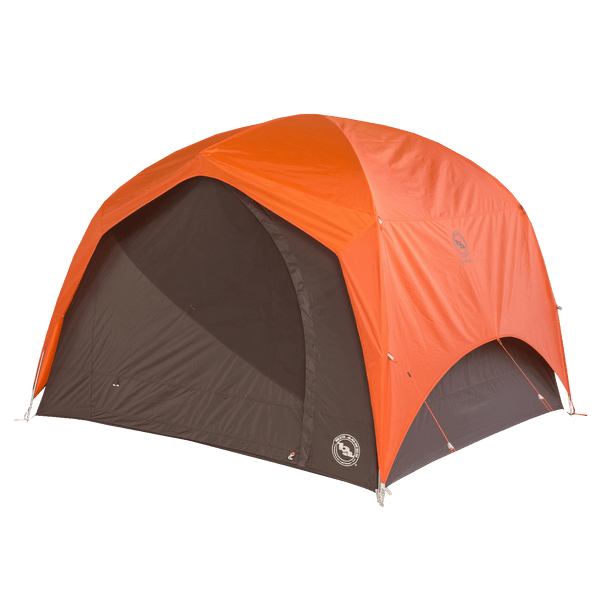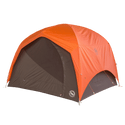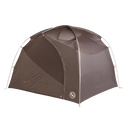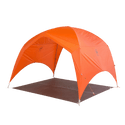- Shop
- Who We Are
- Sustainability
- Support

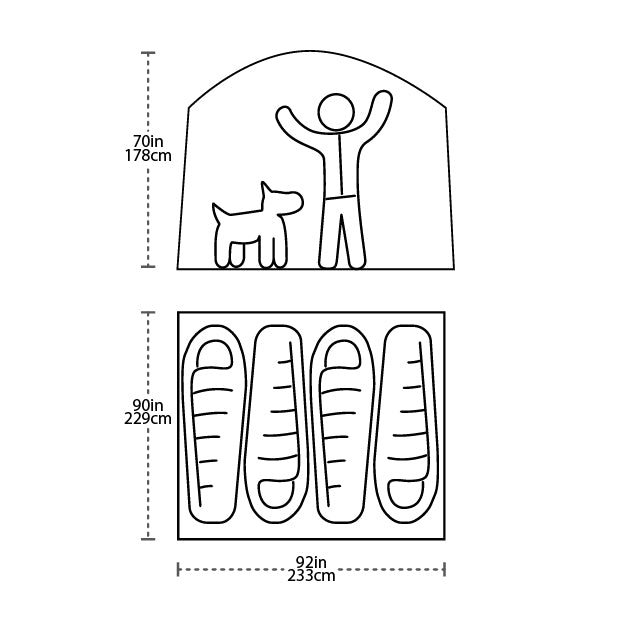
Tent and Footprint Cleaning and Care Instructions:
Storage:
Always make sure your tent is dry and free of debris before storing. Fold and roll your tent a different way each time to avoid permanent creases. Store in a cool, dry place. Never leave your tent in hot temperatures (such as a car trunk or attic space) for long periods of time, as it will damage the material coatings. Storing your tent damp can result in mildew growth, which may cause your tent to smell, leak, or delaminate. Mildew damage is not covered under warranty.
Cleaning:
For light cleaning, sponge the product with warm water (not hot).
For more thorough cleaning you will need:
-Wash basin (or bath tub)-Warm water (not hot)
-Waterproof Gear Cleaner (we recommend products like Nikwax Tech Wash)
-Sponge
1. Submerge your gear in warm, clean water. Gently agitate with hands. Empty dirty water. Repeat until most of the excess dirt/grime is removed and water is mostly clear.
2. Apply waterproof gear specific wash and gently work into fabric with sponge.
3. Rinse gear thoroughly.
4. Hang it up to dry.
5. Triple check that your gear is completely dry before storage or use.
*Do not dry clean or machine-wash. Detergents and dry cleaning solvents will damage the fabric and ruin waterproofing.
*Never use hot water, bleach, liquid detergents, or dishwashing liquids.
*Allow to dry COMPLETELY before storage or use.
*Avoid prolonged direct sunlight as UV exposure can compromise waterproofing.
Seam Sealing:
Big Agnes tents are seam sealed as part of our manufacturing process! This seam tape alone is durable enough to prevent water leakage. Any seams that have been taped do not need to be seam sealed with a liquid sealer unless you want extra protection. Make sure the seam-sealer is completely dry before re-packing your tent. Damage caused by misapplication may void warranty.
Zippers:
Keeping your zippers clean will help keep the coils and sliders from wearing out. If filled with dirt, vacuum or brush zippers before storing tent. We recommend Gear Aid Zipper Cleaner and Lubricant.
Repairs and Warranty:
All Big Agnes tents are guaranteed against manufacturing or material defect. We do not warranty products damaged from normal wear and tear, alteration made by owner, misuse, accidents or damages caused by uses other than intended. Damage due to misuse, normal wear and tear, or improper care may be repaired, at the discretion of Big Agnes, at a reasonable charge. Tents returned for repair must be clean and free of debris.
Questions? Call us or open a support case:
877.554.8975 | support.bigagnes.com
BIG HOUSE SET UP INSTRUCTIONS
1. Remove contents from stuff sack. Spread out tent body over desired campsite.
2. Stake out the four corners of the tent body.
3. Assemble the three poles: two long poles and one shorter ridge pole. Ensure each pole section is fully seated into the next by hand instead of allowing the shock cord to snap them together.
4. Feed the two long poles through the pole sleeves running diagonally along the top
of the shelter.
5. Insert the pole tips into the grommets at the four corners of the tent.
6. Attach the plastic clips on the tent body to the corresponding poles. At this point you will have a freestanding structure.
7. Feed the ridge pole through the pole sleeve running perpendicular to the tent doors. Insert each end of this pole into the corresponding clear plastic “Ball Cap” (pictured below), located above each door.
8. Drape the rainfly over the tent body and orient so that the colors of the webbing on the fly match the webbing on the tent body.
9. Insert each end of the ridge pole into the pole pockets on the underside of the fly. Attach hook & loop tabs on the underside of the fly to the corresponding poles for best stability.
10. Make sure webbing at the corners of the rainfly is completely slackened. Attach the buckles on the corners of rainfly to those on the corners of the tent body.
11. Tighten the webbing on each buckle as needed to keep the rainfly taut.
12. Stake out and tension all guylines for best stability, completing set up.
Optional Shelter Mode (footprint sold separately)
Big Agnes footprints enable an alternative structure setup; leave the tent body behind and bring your footprint, rainfly, and poles to create a fast and light, open-air shelter. Footprint sold separately.
1. Lay the footprint on the ground and stake out each corner.
2. Assemble the three poles: two long main poles and one shorter ridge pole. Ensure each pole section is fully seated into the next by hand instead of allowing the shock cord to snap them together.
3. Insert the ends of the ridge pole into the front and rear pole pockets located on the underside of the fly. Set aside.
4. Insert the pole tips of the two main poles into the grommets at the four corners of the footprint, creating an X-shaped structure with the poles.
5. Set the ridge pole/fly assembly on the intersection of the two main poles and, using the hook and loop strap at the center of the rainfly, bound the ridge pole to the intersection of the two main poles.
6. Spread the rainfly over the pole structure and attach all hook and loop straps to the
corresponding poles.
7. Make sure webbing at the corners of the rainfly is completely slackened. Attach the buckles on the corners of rainfly to those on the corners of the footprint.
8. Tighten the webbing on each buckle as needed to keep the rainfly taut.
9. Stake out and tension all guylines for best stability, completing set up.
Optional Accessory Vestibule (sold separately)
1. Complete tent set up prior to attaching Accessory Vestibule. Set up is easiest when the vestibule door is zipped closed.
2. Spread out the vestibule in the correct orientation to the tent. Vestibule may be attached at front or back door. For even more space, attach a vestibule at each door.
3. Assemble the vestibule pole. Ensure each pole section is fully seated into the next by hand, instead of allowing the shock cord to snap them together.
4. Locate the three female buckles on the the main tent; one over the door and at each of the upper pole clips. Connect them to the male buckles on the underside of the vestibule fly.
5. Fit the rear webbing grommets of the vestibule onto the adjacent pole tips of the main tent. These two pole tips will each be in both the tent and vestibule grommets.
6. Feed the vestibule pole through the vestibule pole sleeve and insert the pole tips into the midpoint webbing grommets on either side of the vestibule.
7. Attach plastic clips to vestibule pole. Tension webbing at buckles.
8. Stake out the two loops at the base of the vestibule where it attaches to the tent.
9. Stake out the midpoint webbing loops at the base of each vestibule pole tip.
10. Stake out the webbing loops at the vestibule door.
11. Stake out and tension all guylines for best stability, completing set up.
HELPFUL HINTS FOR TENT SET UP
• Our tents are easy to set up but we suggest you practice once at home before using them for the first time to avoid late night bickering with tent mates while fumbling around in the dark.
• Before pitching tent, clear campsite of debris that may pierce tent floor.
• We recommend staking out all corners, vestibules and guylines to increase space and keep your tent from becoming a tumbleweed.
• Hang onto your stuff sacks or they’ll blow away and create backcountry litter.
• Pull on the pole sleeve fabric when inserting poles to avoid any bunching in the material.
• Push rather than pull poles through pole sleeves.
Thanks for choosing a Big Agnes tent!
Please feel free to contact us if you have any questions or comments.
www.support.bigagnes.com
Hahns Peak was founded in 1865 during Colorado’s gold and silver rush days, and was the original county seat of Routt County. It was also home to the first school and post office in the county. The original jail, or “Big House”, was called the Bear Cage Jail for obvious reasons. Famed outlaw Butch Cassidy even spent a bit of time cooling his heels in the Bear Cage. After the glory days were over and the mines and businesses dried up, Hahns Peak became a ghost town and only the buildings remained.
